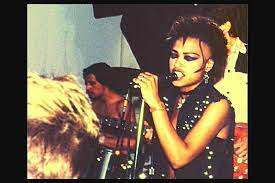Martha Elaine Wash (born December 28, 1953) is an American singer-songwriter, actress, and producerknown for her distinctive and powerful voice.
Wash first achieved fame as half of the Two Tons O' Fun, who sang backing vocals for the disco singer Sylvester including on his signature hit "You Make Me Feel (Mighty Real)". After gaining their own record deal, they released three consecutive commercially successful songs which all peaked at number two in the dance charts.
The duo was renamed the Weather Girls in 1982 after they released the top-selling single "It's Raining Men", which brought them to mainstream pop attention. The Weather Girls released five albums and were heavily featured on Sylvester's albums. After disbanding in 1988, Wash transitioned to house music as a featured artist on several successful songs. Her success on the Billboard dance chart has earned her the honorific title the Queen of Clubland, with a total of fifteen number-one songs on the chart to date.
Wash is also noted for sparking legislation in the early 1990s that made vocal credits mandatory on CDs and music videos. Starting in the late-1980s, her studio vocals were used in several successful dance songs without her permission or proper credit. Models lip-synced to her voice in music videos and during live performances, obscuring Wash's contributions and hiding Wash's size as a full-figured woman. As a result, she was denied credit and royalties for many of the songs she recorded. This included platinum-selling song "Gonna Make You Sweat (Everybody Dance Now)". Subsequently, in Rolling Stone, music critic Jason Newman described Martha Wash as "The Most Famous Unknown Singer of the '90s". In December 2016, Billboard magazine ranked her as the 58th most successful dance artist of all time.





